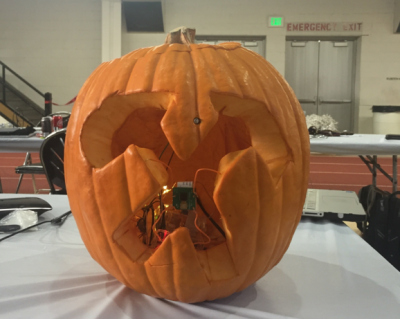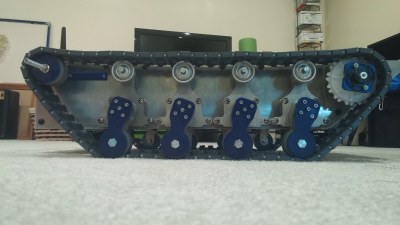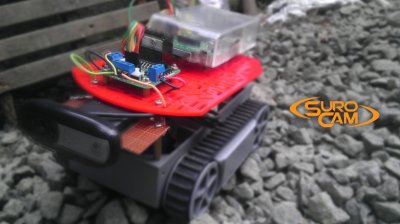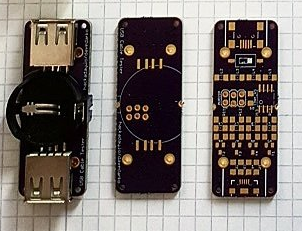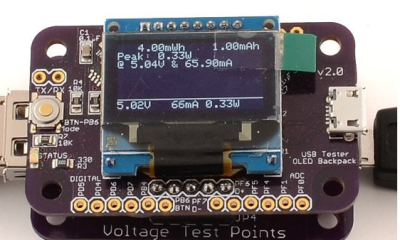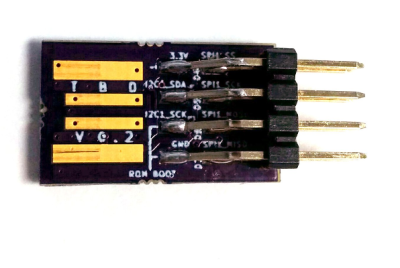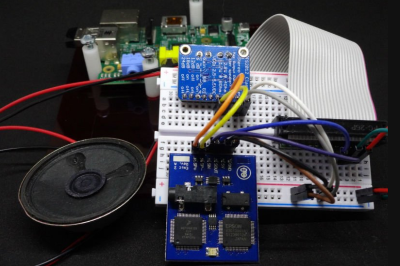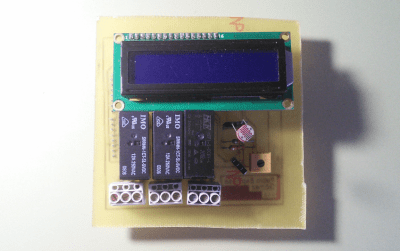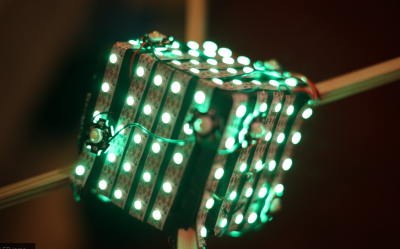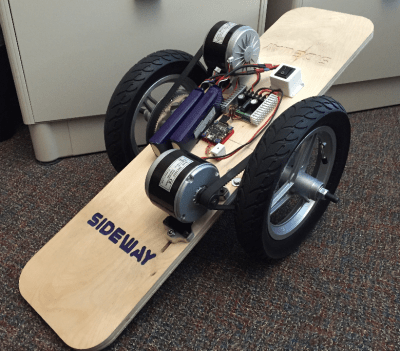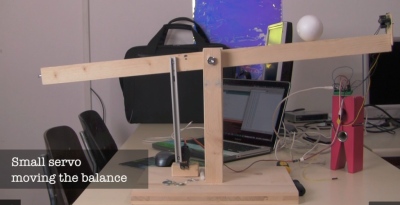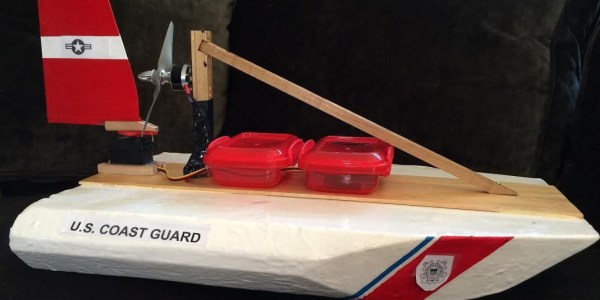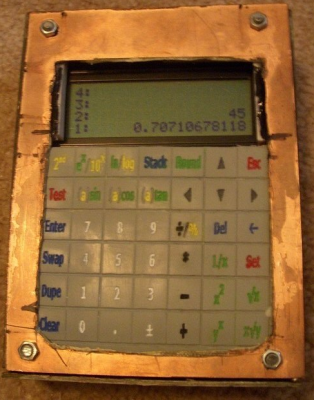Halloween is when the ghouls start haunting and the hackers start hacking. All hallows eve is the perfect holiday for eerie blinking LEDs, spooky audio oscillators, and wild animatronics. We had a double dose of Halloween hacks last year on the Hacklet. This year we’re bringing you even more of the best Halloween hacks on hackaday.io!
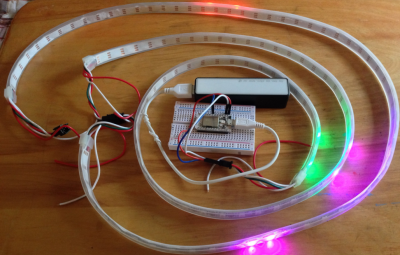 We start with [dougal] and Halloween Blinky Eyes. [Dougal] wanted to create the effect of creatures peeking at you from the dark corners of the room, and he’s certainly nailed it. A strip of WS2812 LEDs is the trick here. Pairs of LEDs light up, blink, and fade away like spooky eyes. The Strip is controlled by a Particle Core using Adafruit’s NeoPixel Library, though [Dougal] plans to move to the FastLed library. Everything is powered by a USB power pack. This hack isn’t much to look at with the lights on, so check out the video to see these eyes really shine!
We start with [dougal] and Halloween Blinky Eyes. [Dougal] wanted to create the effect of creatures peeking at you from the dark corners of the room, and he’s certainly nailed it. A strip of WS2812 LEDs is the trick here. Pairs of LEDs light up, blink, and fade away like spooky eyes. The Strip is controlled by a Particle Core using Adafruit’s NeoPixel Library, though [Dougal] plans to move to the FastLed library. Everything is powered by a USB power pack. This hack isn’t much to look at with the lights on, so check out the video to see these eyes really shine!
 Next up is [controlmypad] with Blair the Witch Project. A normal trip to Home Depot turned paranormal when [controlmypad] spotted an awesome witch decoration. The free-standing mannequin had some basic animatronics and the all important manual trigger. [controlmypad] already had a discarded electric wheelchair. After replacing the chair batteries he modified it with a Sabertooth 2×32 Motor Controller and a standard radio control receiver. A spare channel was connected to Blair’s manual trigger. An aluminum tube joins the witch and the scooter. The hardest part of this hack was keeping Blair’s skirt out of the scooter wheels. Home Depot to the rescue! A simple hoop made of lawn edging plastic keeps the fabric and wheels apart.
Next up is [controlmypad] with Blair the Witch Project. A normal trip to Home Depot turned paranormal when [controlmypad] spotted an awesome witch decoration. The free-standing mannequin had some basic animatronics and the all important manual trigger. [controlmypad] already had a discarded electric wheelchair. After replacing the chair batteries he modified it with a Sabertooth 2×32 Motor Controller and a standard radio control receiver. A spare channel was connected to Blair’s manual trigger. An aluminum tube joins the witch and the scooter. The hardest part of this hack was keeping Blair’s skirt out of the scooter wheels. Home Depot to the rescue! A simple hoop made of lawn edging plastic keeps the fabric and wheels apart.
[Alex Cordonnier] and his team participated in Boilermake 2015, a 24 hour Hackathon at Purdue University. The fruit of their labor is Trick or Tweet, the tweeting Jack-o’-lantern. Yes folks, we now have the internet of gourds. Hiding inside Trick or Tweet is a Raspberry Pi and a Pi Camera. The pumpkin itself is also a giant capacitive touch switch. Touching the pumpkin triggers a count down after which Trick or Tweet snaps a photo. It then adds some spooky Halloween overlays, a pun or two, and throws the whole thing up on twitter @PumpkinPiPics. [Alex] hasn’t uploaded the code yet, but we’re guessing it consists of a few Python scripts. Pretty awesome for 24 hours of work!
 Sometimes Halloween hacks take on a life of their own. That’s exactly what happened when [Hari Wiguna] sat down with a few parts he ordered from China. Happy Halloween 2015 is the result. [Hari’s] order included some potentiometers, a two color OLED display, and some Arduino clones. In no time [Hari] had three pots wired up to the Arduino’s analog inputs. The OLED quickly followed, displaying graphics via the Arduino’s I2C bus. He really wanted a Jack-o’-lantern though. It took a bit more tweaking, but eventually [Hari] was successful. The first pot sets eye size. The second controls eye rotation. The third pot changes the width of Jack’s mouth. [Hari] has all the code for this hack up on his most recent project log.
Sometimes Halloween hacks take on a life of their own. That’s exactly what happened when [Hari Wiguna] sat down with a few parts he ordered from China. Happy Halloween 2015 is the result. [Hari’s] order included some potentiometers, a two color OLED display, and some Arduino clones. In no time [Hari] had three pots wired up to the Arduino’s analog inputs. The OLED quickly followed, displaying graphics via the Arduino’s I2C bus. He really wanted a Jack-o’-lantern though. It took a bit more tweaking, but eventually [Hari] was successful. The first pot sets eye size. The second controls eye rotation. The third pot changes the width of Jack’s mouth. [Hari] has all the code for this hack up on his most recent project log.
Not spooked enough? If you want to see more Halloween projects, check out our newly updated Halloween hacks list! Did I miss your project? Don’t be shy, just drop me a message on Hackaday.io. That’s it for this week’s Hacklet; As always, see you next week. Same hack time, same hack channel, bringing you the best of Hackaday.io!


